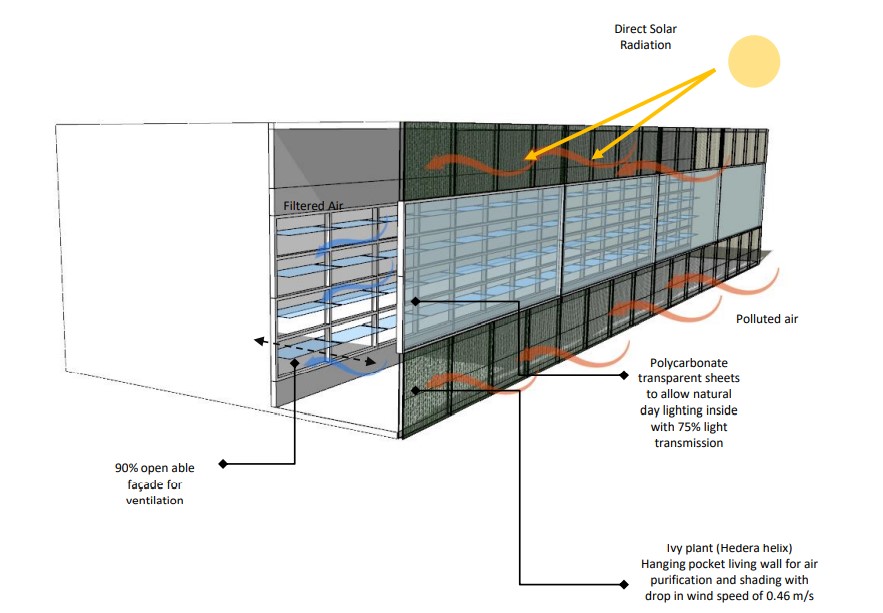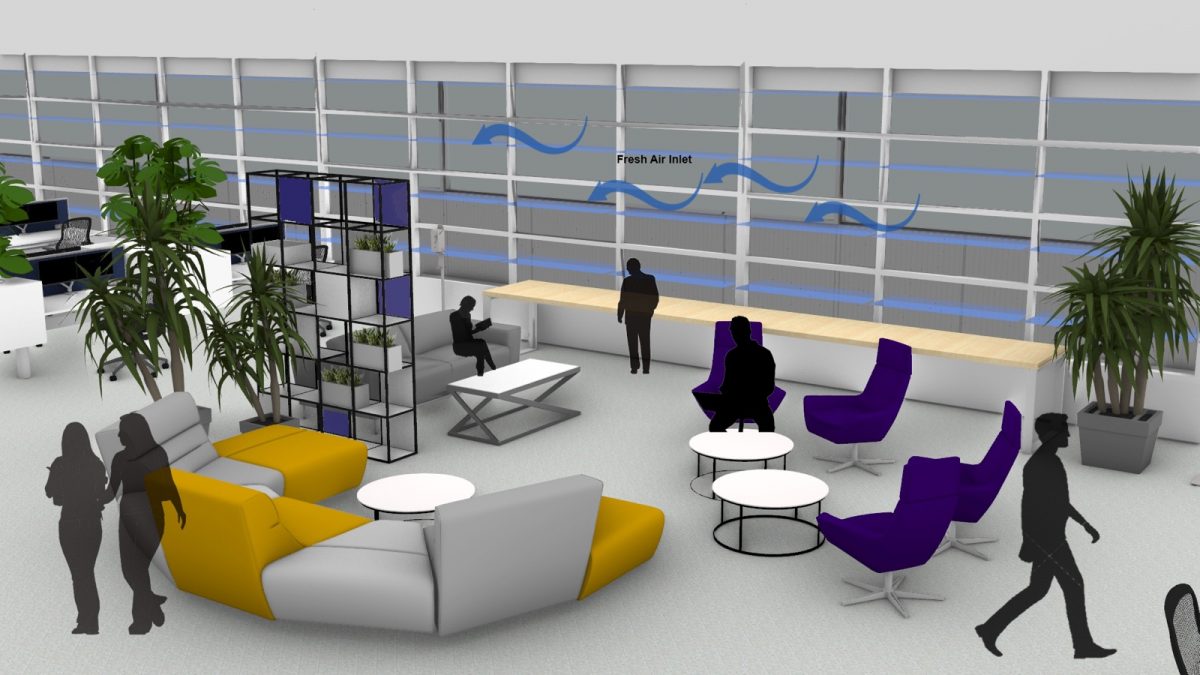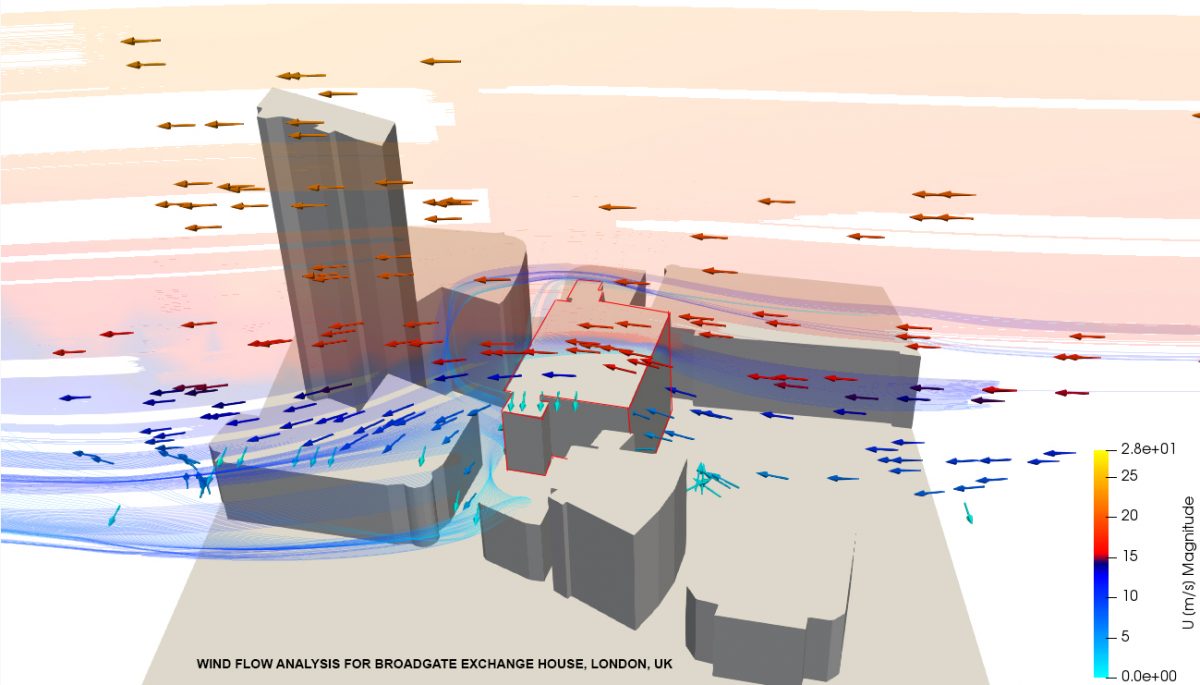Improving the Wellbeing and Energy use in Post-pandemic Offices in London, UK
[Thesis developed in collaboration with SOM]
Post pandemic the world has experienced a drastic change and has forced us to switch to more modern and technology-based systems of working. The biggest challenge today is to create spaces that are dynamic, safe for the people, and promote collaboration. A typical office building in London uses almost 180-200 kWh/m2 operational energy for lighting, cooling, heating, etc. According to the RIBA guidelines for 2030, operational energy must be cut down to almost 60% to overcome the climate crisis. The first study on Broadgate Exchange House was carried out in-depth to understand the various retrofitting strategies. Mixed Mode ventilation to reduce the cooling and heating loads was investigated and measures to form a set of guidelines to make buildings more energy-efficient with retrofitting strategies. Broadgate Exchange House’s study focuses on developments to reduce operational costs sustainably and looks at the different measures that could be taken to improve the well-being and productivity of people in offices. Different parameters like post-pandemic design, air ventilation rate, mechanical ventilation systems, natural cooling strategies, reduction in solar gains, and pollution levels have been examined to reduce energy loads by almost 87% for the north side offices. By 2050, 70% of building areas in London are still going to be in use. Hence, considering Covid-19 variations in the changing phase of the pandemic, climatic heat, physical and mental health, absenteeism, productivity levels, and cost-benefit analysis in the long run, retrofitting is a comprehensive and viable option for offices.
Keywords: Post pandemic offices, retrofitting, productivity, London, operational energy, natural ventilation, cooling and heating loads.












